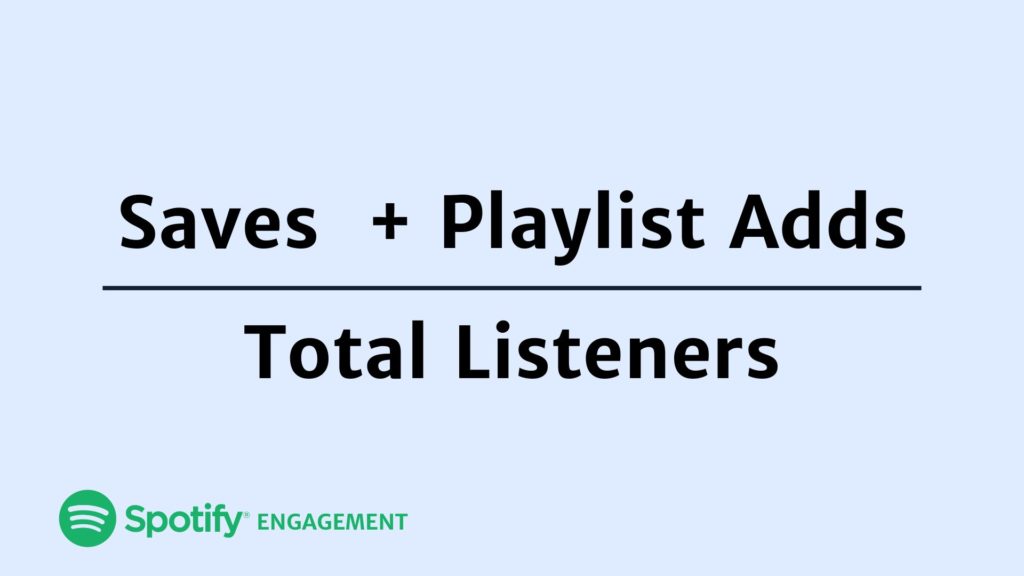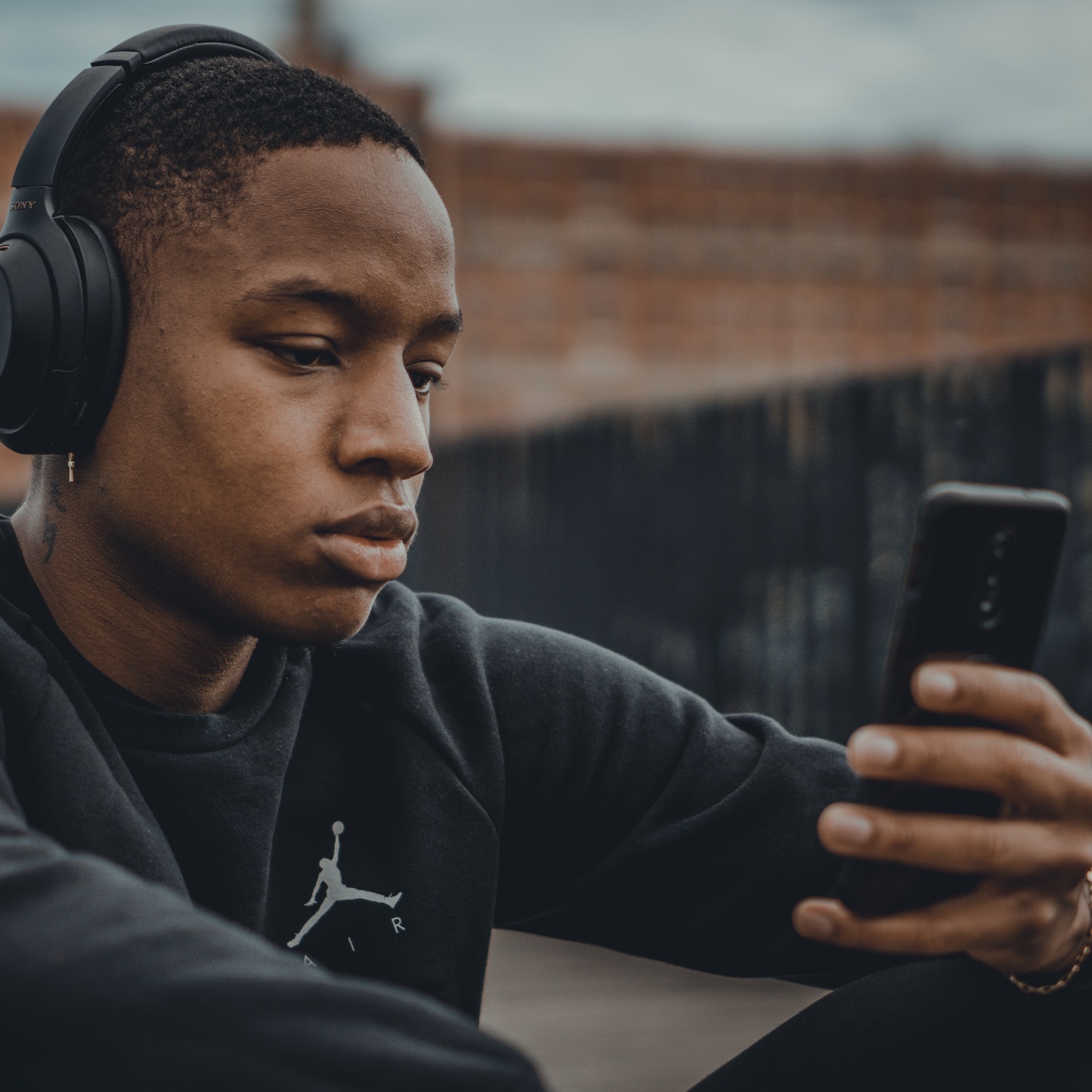It’s not a secret that what’s measured gets improved. As much as we musicians like to hate on metrics, the truth is that the same goes for Spotify success.
If you’re an artist and seriously thinking of making music your profession, you don’t just have to analyze your audience –you’ve also got to build your marketing strategy accordingly. To that end, stick with me to the end of this article, and we’ll talk through what “good engagement” on Spotify looks like as an artist (and how to make it happen).
Why an engaged audience on Spotify is important
Take a moment and think about one of those times when you performed in front of an audience and the connection with them was just perfect. That’s the best, right? Well, audience engagement is a major factor in “real life”, and it’s also a critical factor when it comes to engaged audiences on Spotify.
You might think it’s easier to connect with people when they’re in front of you, but trust me, there are many ways you can actually engage with your online audience, too. (Although, yeah, real life is probably more fun.)
Let’s start with the basics.
Do you use Spotify to interact with your followers? Do you use Spotify to promote yourself and make people aware of your work? If not, you might be missing the best opportunity to maximise your audience.
Now, Spotify for Artists also features some new Engagement metrics for measuring your performance, like saves, playlist adds, and intent rate. Making the most of these professional (and free) tools will open up plenty of opportunities for your career, unlocking data you’ll be able to use to target your marketing efforts and get to know your fans.
Let’s set a benchmark, to start…
What healthy engagement rates should look like for artists?

Before we delve deeper into the topic, it’s crucial to understand what engagement metrics are, as this percentage will explain how “effective” your music is when listeners interact with it. In contrast to follower counts, engagement metrics offer more information about your audience, and by looking at the ratio, you can determine how much interest there is in your song within the platform.
Engagement means that listeners will go where you want them to go: listen to your new release, read an article about you, watch your live stream, buy concert tickets, etc.
So how do you tell whether a figure or percentage in your engagement metrics is good, could be better, or is just bad?
If you search online, you’ll notice people agree that a good engagement rate is somewhere around ten. However, that’s not always the case, as it depends on the type of promotion you’re doing for your music, the music genre, and how niche your market is.
Your engagement can range from about 0.5% all the way to 100%, depending on the types of actions you’re taking while marketing your music – but a benchmark to shoot for is 10%.
First of all, let’s start with the Engagement section. To get there, navigate over to Audience at the top of the menu, then click on Engagement in the sub-menu. You’ll see listeners, streams, your stream per listener ratio saves, and then playlist ads. If you don’t know what any of these metrics are, no worries; just click the question mark, and Spotify will explain what all of this data means.
What are key Spotify engagement metrics?
Let’s run down a few of the common numbers to know:
Listeners: The number of people on Spotify who played your music.
Streams: the number of times your songs were played for longer than 30 seconds.
Streams to listeners ratio: this is the average number of times your listeners play your songs. A higher stream-to-listener ratio indicates a higher audience engagement.
The other two stats are saves and playlist ads. Both of these show your fans’ intention to listen to your songs in the future. These are crucial stats to keep track of your fanbase’s growth.
Saves: the number of times people have saved your music to their saved library.
There is a study that says if a fan saves your song, it means they’ll listen to it three times more than the casual listener. Fans who save songs clearly intend to listen to them again. Furthermore, they also tend to listen to your songs in the future, boosting your tracks even months after publication. If you read some of my previous articles, you know how important it is to maintain a constant flow of streams to keep your Spotify profile relevant.
You should always encourage your audience to save your song in advance. A pre-save is equivalent to a pre-order because it allows your marketing team (if you have one) to gauge the level of interest in your music. In this way, you’ll also have better chances of being included on both an editorial playlist and a user-generated playlist if you have a significant number of pre-saves, as it demonstrates to Spotify you’re an artist worth promoting.
Playlist adds: the number of times people added your music to their playlist. These are their own personal playlists, and it also shows an intention to listen to your music again in the future.
The results of user playlists go well beyond streams.
A listener will listen to you 41% more often and look at your profile 12% more frequently after adding you to a personal playlist. If you want to find out more about the value of playlists, check out this Spotify Data article, which covers the basics thoroughly and clearly explains how to read your stats.
Spotify’s algorithm will detect when fans add your music to their personal playlists and will start recommending it to individuals who have similar tastes. Additionally, each time you publish a new song, your music will be instantly included in a fan’s “Release Radar” playlist if they follow you on Spotify.
How to calculate Spotify Engagement

We can use a formula to calculate the engagement rate by taking the number of saves, adding them to the playlist adds, and then dividing that number by the total number of listeners. Don’t forget to move the comma two places to the right, and you will get the percentage. For instance, if your result is something like 0.0456, then the engagement rate would be around 5%.
But that number means nothing without context. You don’t know if a certain artist is running Facebook ads, email campaigns, or if they are running playlist promotion campaigns. If you go into Audience and scroll down to the Source of Streams chart, you can see the traffic source creating these engagement stats.
You can also calculate 3rd party playlist engagement by going through the same calculation: taking the saves, adding them to the playlist ads, and then dividing that number by the total number of listeners.
It’s important to tie your engagement rate to the source of streams that you’re generating for your music to get the full picture. If you were using playlist promotion but you were expecting an engagement rate of 10, sorry – you’re aiming at an unrealistic goal for the type of traffic that you’re generating.
Playlists that use bots or different apps to generate fake streams might be manipulating the numbers in order to artificially hit that 10%-engagement rate without any lasting results. This approach is actually detrimental to your music and your artistic career, so don’t focus too much on numbers because engagement rate isn’t the whole story.
With that said, if your music is getting on a playlist, your song’s engagement rate should be consistent with the playlist engagement rate benchmark. Usually, a good playlist engagement rate benchmark is somewhere between 1-3% engagement.
If you’re using Facebook ads and its marketing tools to directly send fans to your artist profile to stream and save your songs, then you can achieve a high engagement rate thanks to the different traffic sources. The traffic is not just from a playlist anymore – the traffic is through direct marketing. If someone is clicking on an ad, that click is already a valuable action for your stats. Then they have to hit play on your song because Spotify doesn’t support autoplay once you click a Facebook ad, so that’s already another demonstration of interest in your music. By the time they listen to your song, you already have a super-targeted individual who’d already jumped through some hoops before hitting the save button on your song.
Through direct marketing, you can be sure to hit that 10%-engagement benchmark.
It’s important to understand that the engagement ratio will change as a result of the type of traffic you send to your Spotify page. The quality of your advertising is expressed by your cost per click and how expensive that ad is running on Facebook.
And similarly, you can make out the quality of the playlist you got on by how many listeners will keep listening to your tracks even after your music was removed from the playlist. How many fans are sticking around? Answering this question helps fully understand the effectiveness of your marketing promotion.
If you promote ethically, using real traffic sources, legitimate Spotify playlists, well-crafted Facebook ads, and not bots, low-quality agencies that just bump the numbers and don’t actually engage real people, you will see a long-term positive impact on your music career.
Focus on the quality of your fanbase in the long term. You’re going to build your music career for success for years to come and not get caught in the weeds of idolatry over a single stat that means nothing without the full picture around it.
Final thoughts on Spotify engagement
Understanding your audience is crucial when developing a long-term strategy to develop your career. Engagement measurements are based on a multitude of variables that can affect your decisions: it’s not all about following or streams. Career stage, status, and your niche are all elements that affect the engagement ratio. Working on your artistic brand and establishing a solid core community contribute to a healthy progression of your career.
Now you know what you should be focusing on in order to plan and analyze your Spotify promotion analytics. The most important indicator of streaming success is an engaged audience and devoted followers: the loyal fans who’ll accompany you in your creative journey for years to come.
Good luck making it happen!








